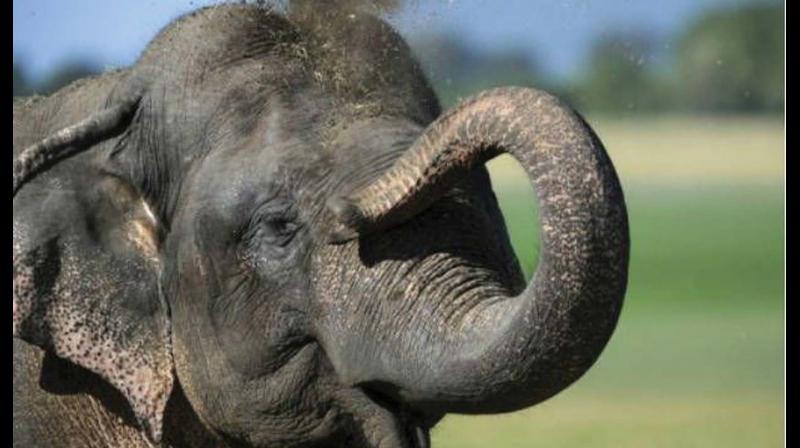Kerala: Temple fests kill elephants at young age
Eighteen of the 20 dead in 2017 are less than 50 years of age, 11 are below 40 and 7 are below 30.

THIRUVANANTHAPURAM: The death of a captive elephants in the state seems to have become as much a non-event as the death of a stray on a busy road. Still, the deaths of 20 captive elephants in 2017 should switch on the red alert. It is not the number but the age of the dead elephants that the state should be concerned about. 18 of the 20 dead in 2017 are less than 50 years of age, 11 are below 40 and 7 are below 30. Not surprisingly, most of the deaths have happened in and around temple festivals.
“If the young are dying, it is high time we looked into the cause of these deaths. It is not just enough to conduct a post-mortem and say that the elephant was ill,” prominent elephant expert and former director of Kerala Forest Research Institute Dr Easa said. “The forest vets might be skilled clinically but I doubt whether they have enough awareness of captive elephant management,” Dr Easa said. Heritage Animal Task Force general secretary V.K. Venkitachalam alleged that even post-mortems were carried out in a slipshod manner. “In many cases the post-mortem reports were submitted way after the 30-day deadline,” Mr Venkitach-alam said. He wants the Forest Department to acknowledge that captive elephants in the state were being overworked.
Some of the dead elephants, like Parthasa-rathy (49), Junior Achuthan (30) and Kodumon Ganapathy (42), had collapsed at the spot where they were tied. These deaths had also exposed the veterinary community’s inability to deal with an ailing pachyderm. Take for instance Parthasa-rathy’s death on June 23. A couple of days before the elephant’s death there were Facebook posts assuring ‘fans’ that Parthasarathy had recovered. Dr Easa said that vets should stop looking at wounded elephants as patients. “They have to look at it as a wild elephant, and assess the quality of food, water, shade and rest they are provided,” Dr Easa said. Kodumon Ganapathy’s death, like the deaths of GuruvayoorAdithyan (22) and Thiruvambadi Unnikrishnan (47), was a case of overwork. Ganapthy's ownership had regularly changed hands, as though it was some cursed animal. This led to leading to constant travel and overwork for these elephants.
“Along with the constant change in custodians, Ganapathy was also subjected to worst forms of disciplining,” Venkitachalam alleged. At the time of death, it was reported that the elephant was found in a place devoid of basic facilities. It had wounds all over its body, too. The only two elephants whose deaths were not linked to festivals were the oldest elephants; Hansraj (65), and Kannamkulangara Sasi (75). At death, they were more skeleton than flesh, a clear hint that they died of hunger and some mysterious disease.

